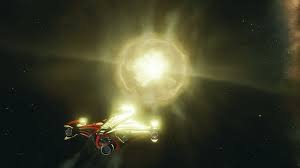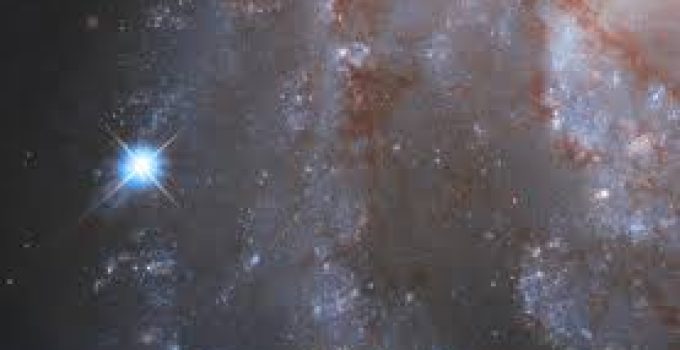Page Contents
ToggleSupernova events represent some of the most spectacular and energetic phenomena in the universe. These explosive deaths of stars release an immense amount of energy, briefly outshining entire galaxies and producing elements essential to the cosmos. As both destructive and creative forces, Supernova Event play a fundamental role in shaping the universe and influencing the lifecycle of stars and galaxies.
Understanding Supernova Events

A Supernova Event is the violent explosion of a star, marking the end of its lifecycle. This phenomenon occurs when the balance between gravity and the outward pressure from nuclear fusion in a star’s core collapses. The result is a catastrophic release of energy that ejects the star’s outer layers into space.
Supernovae are classified into two main types based on their triggering mechanisms:
- Type I Supernovae: These occur in binary star systems where a white dwarf accretes matter from its companion star. When the white dwarf exceeds a critical mass, known as the Chandrasekhar limit, it undergoes a thermonuclear explosion.
- Type II Supernovae: These result from the core collapse of a massive star. When nuclear fusion in the core ceases, gravity causes the core to collapse, triggering a powerful explosion.
The Lifecycle Leading to Supernovae
Supernova events are the final chapter in the lifecycle of certain stars.
- Low-Mass Stars: Stars like the Sun do not become supernovae. Instead, they end their lives as white dwarfs after shedding their outer layers to form a planetary nebula.
- High-Mass Stars: Stars with masses greater than eight times that of the Sun undergo a different fate. They burn through their nuclear fuel quickly and produce heavier elements in their cores. Once the core becomes iron, fusion ceases, and the star collapses under gravity, leading to a Type II supernova.
- Binary Star Systems: In Type I supernovae, a white dwarf in a binary system gains mass from its companion until it becomes unstable and explodes.
The Energy and Light of a Supernova
Supernovae are extraordinarily luminous events. For a brief period, they can radiate as much energy as the Sun will emit over its entire 10-billion-year lifetime. The light curves of supernovae vary depending on their type, with Type Ia supernovae showing a predictable increase and decrease in brightness, making them valuable as standard candles for measuring cosmic distances.
The explosion produces not only visible light but also gamma rays, X-rays, and other forms of electromagnetic radiation. Observing these emissions provides insights into the physical processes occurring during the explosion.
The Chemical Contributions of Supernovae
Supernovae are cosmic forges, responsible for creating many of the elements found in the universe. During the explosion, the intense heat and pressure enable the formation of heavy elements through nuclear reactions.
- Type II Supernovae: These events produce elements such as oxygen, silicon, and iron. The ejected material enriches the interstellar medium, providing the building blocks for new stars and planets.
- Type Ia Supernovae: These explosions are significant sources of iron and nickel, contributing to the chemical evolution of galaxies.
The elements synthesized in supernovae are essential for life. For example, the calcium in bones and the iron in blood originated in the explosions of ancient stars.
The Role of Supernovae in Galactic Evolution

Supernovae play a pivotal role in the evolution of galaxies.
- Triggering Star Formation: The shock waves from Supernova Event explosions compress nearby gas clouds, initiating the formation of new stars.
- Enriching the Interstellar Medium: The ejected material from supernovae contributes to the chemical diversity of galaxies, influencing the composition of future generations of stars.
- Regulating Galactic Dynamics: The energy released in Supernova Event explosions heats the interstellar medium and drives galactic winds, shaping the structure and dynamics of galaxies.
Supernova Remnants
After the explosion, supernovae leave behind remnants that continue to influence the surrounding environment.
- Neutron Stars: If the core’s mass is between 1.4 and 3 times that of the Sun, it forms a neutron star—a dense object composed almost entirely of neutrons. Neutron stars often emit beams of radiation, becoming observable as pulsars.
- Black Holes: For cores exceeding three times the Sun’s mass, the collapse forms a black hole, an object with gravity so intense that not even light can escape.
- Supernova Remnants: The expelled material expands outward, forming structures such as the Crab Nebula, a glowing remnant of a Supernova Event observed in 1054 AD.
Observing Supernova Events
Advancements in technology have revolutionized the observation of supernova events. Telescopes equipped with sensitive detectors can capture these explosions across various wavelengths, from radio waves to gamma rays.
Supernova surveys, such as those conducted by the Zwicky Transient Facility and the Vera C. Rubin Observatory, enable astronomers to detect and study these events in real time. Space-based observatories like the Hubble Space Telescope and the upcoming James Webb Space Telescope provide detailed observations of distant supernovae, shedding light on their origins and impact.
Supernovae as Cosmic Yardsticks
Type Ia supernovae are critical tools for measuring cosmic latoto distances. Their consistent peak brightness allows astronomers to determine the distance to far-off galaxies with remarkable precision. These measurements have led to groundbreaking discoveries, such as the accelerated expansion of the universe and the existence of dark energy.
The Connection Between Supernovae and Gamma-Ray Bursts

Some Supernova Event, particularly those associated with the collapse of massive stars, are linked to gamma-ray bursts (GRBs). These intense bursts of gamma rays are among the most energetic events in the universe.
Long-duration GRBs are thought to occur when the core of a massive star collapses into a black hole, producing powerful jets of radiation. Observing the connection between supernovae and GRBs helps astronomers understand the mechanisms driving these extreme phenomena.
The Future of Supernova Research
As technology advances, the study of supernova events will continue to deepen our understanding of the universe. Next-generation telescopes and observatories, such as the European Extremely Large Telescope and the Square Kilometre Array, will provide unprecedented sensitivity and resolution, enabling the detection of fainter and more distant Supernova Event.
The study of gravitational waves from Supernova Event, a field still in its infancy, holds the potential to reveal new insights into the dynamics of these explosions. Future missions may also explore the role of Supernova Event in the formation of planetary systems and the distribution of elements in the cosmos.
The Impact of Supernovae on Life
Supernovae have a profound connection to life on Earth. The heavy elements produced in these explosions are essential for the formation of planets and the emergence of life. Additionally, nearby Supernova Event may have influenced the evolution of life by exposing Earth to bursts of cosmic radiation, which could have driven genetic mutations or triggered mass extinctions.
Understanding the role of Supernova Event in the history of the solar system and the conditions for life elsewhere in the universe remains a key focus of scientific inquiry.
Conclusion Supernova Event
Supernova events are extraordinary cosmic phenomena that shape the universe in profound ways. From creating the elements that make up stars, planets, and life itself to influencing the evolution of galaxies, these explosive events are central to the story of the cosmos.
By studying supernovae, scientists gain valuable insights into the lifecycle of stars, the dynamics of the universe, and the forces that govern its expansion. As exploration and observation continue to advance, supernovae will remain a vital area of research, unlocking new mysteries about the universe and our place within it. These celestial fireworks remind us of the dynamic and ever-changing nature of the cosmos, offering a glimpse into the cycles of creation and destruction that define the universe.

